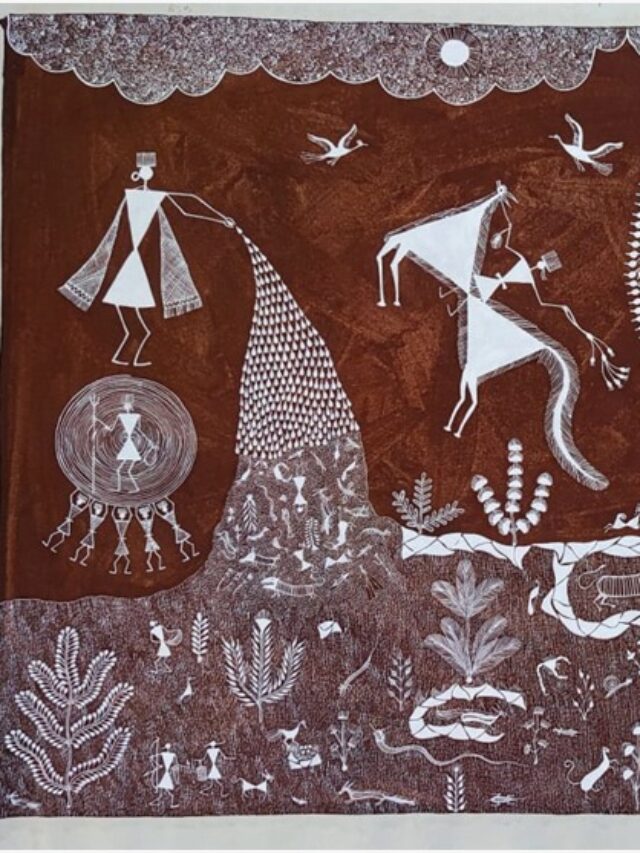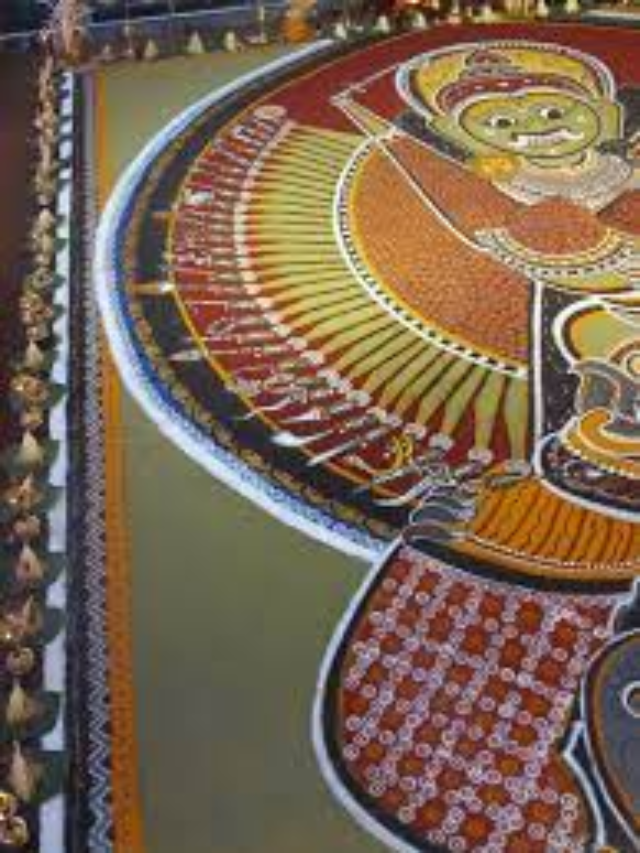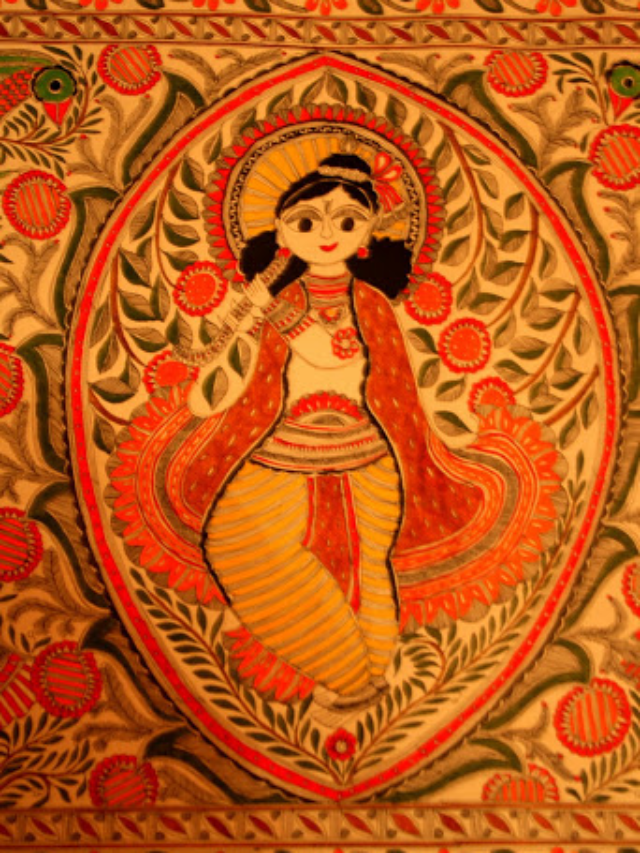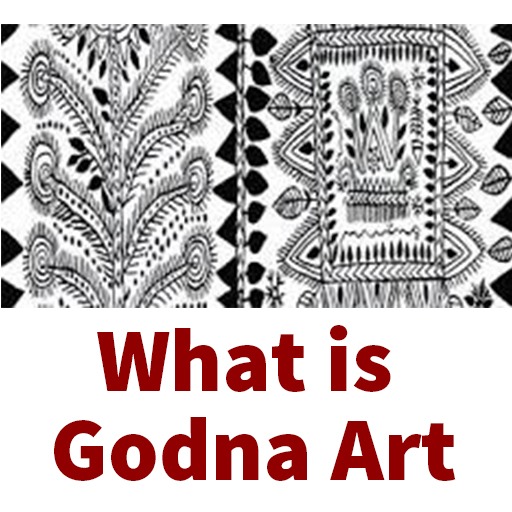Traditional godna art has been restored by women in Jamgala, Sarguja’s, such as Safiano Bai, Budh Kunwar, and Ramkeli, by combining natural pigments obtained from the woods with acrylic paint to solidify them on fabrics.
Tablecloths, wall hangings, napkins, saris, kurtas, and even bed sheets are being made by the women of Jamgala. Umadevi is a well-known Devar Godna artist from the Rajanandgaon area of Chhattisgarh. Santhi Batti has left an unmistakable impact on badi Godna.
Godna artwork and artists have been greatly inspired by modernization. Tattooing has moved away from the human body and onto paper, fabric, and canvas. Through exhibitions and seminars, female tattooists have played an essential role in the spread of Godna artwork in India and beyond.


Ancient Art:
The popular custom of ancient rock art tattooing has been carried on by modern Indian society. Paswan builds their homes with animals, minerals, and crops. Natural colors obtained from the bark, leaves, flowers, seedling of trees and plants, clay, and cow dung are used by Madhubani Godna artisans. Paper washed with cow dung which is handmade and dried before being used as a canvas for painting. They have begun to use commercially accessible synthetic colors.
Tattoo motifs:
Village people have motif tattoos on their foreheads. It is a form of body art that’s primarily done on ladies. The term godna is used to describe the process of piercing the body with just a needle. Mainly amongst ‘lower’ caste communities from this region. Tattooing is an old tradition in India. In Central and Northern India, tattoo art is famously known as ‘Godna. For girls, this is considered trending. Godna is more valuable than silver and gold. Godna contains various motifs, some of which are well-known, each with a specific significance to life, such as childbirth or marriage.
Objectives of Godna:
The goal of Godna art is not to be decorative. Because of their medical properties, tattoos are special for their healing properties. The tribals believe that getting Godna tattooed on their bodies keeps them in shape. It’s used to treat cuts and aches. Natural colorants and veggie colors were once utilized to create body art, but now acrylic brushes and paints are used to paint Godna on canvases and bedsheets. With time, the artists gradually made some changes and added brushes.
Style of Godna Art:
Godna art is made similarly to paintings on paper. Several women embraced this style, which eventually evolved to include bamboo brushes and a variety of vibrant hues derived from leaves, bark, flowers, and berries. Rows of creatures and concentric spheres of flowers, creatures and spirits are created with a sharp lampblack ink and bamboo pens in these artworks. The style of the paintings also includes the best scenes from their ritual practices and daily village life.
Tattoo Pattern:
The various tattoo patterns serve as identifying marks that separate one person from another, one cultural community from another, and one cultural location from another. Three lines are tattooed on the foreheads of females from the Oraon tribe who live in the Raigarh and Surguja districts. The Bhil females have a distinctive bird tattoo on both sides of their eyes. This provides them with a long-lashed appearance. The Bhil are particularly fond of the bird and scorpion theme. The females of the Baiga community have a ‘V’ mark in the center of their forehead and the middle of their brows as their signature tattoo.
The tribals’ go-to tattoo designs are some of the most famous. Peacocks’ geometric and floral motifs, horses, elephants with warriors, scorpions, and tribal mythology are among the images depicted. Girls typically tattoo flowers, while tiny girls prefer single dots in various places on their faces or a half-circle like a horseshoe over their forehead. Tattoos including scorpions, flower designs, deer, and peacocks on the ankles, shoulders, and hands are popular among the elderly.
Concepts of Godna:
As decorations are popular throughout the state’s tribal peoples, their spiritual understanding of ornamentation differs. Ornaments, they believe, are mortal since they are fashioned by humans. As a result, they created Godna art, or tattoos, which seem to be everlasting ornaments that stay eternally. Most tribal women in Chhattisgarh have “Godna” tattoos on their bodies. Some indigenous guys have this art on their bodies as well. According to tribal traditions, these are the only ornaments that stay with people after they die. There are numerous additional intriguing theories about its origin. According to some art historians, it began as an acupuncture practice. Some claim that it was once used to transmit secret coded communications.
Evolution:
Godna art is thought to have evolved from a primitive art form. It is currently carried out widely by women from the Jamgala village in Sarguja’s Lakhanpur Block. Females of this tribe have a tradition of getting tattoos. This trend has recently faded to the point where even the most skilled tattoo artists have stopped practicing. Instead of merely body painting, indigenous women are experimenting by painting ‘Godna’ on linen, silk, canvas, walls and doors, and other surfaces. Ladies from Jamgala such as Budh Kunwar and Safiano Bai, revived the art style by painting ancient tattoo themes on fabrics.
This art was acquired by the women of this area through the practice of traditional tattoo designs on textiles. The Bastar area of Chhattisgarh also has a thriving Godna art culture. The manner of drawing is reminiscent of Madhubani paintings. They mix natural colors gathered from the woods with acrylic paint to create the fabric more durable.
Conclusion:
Body painting is inspired by godna art. In the previous history, we know that godna painting is derived from godna that was made by ‘Nattins Art’. The poor women of the village could not wear jewelry and do not wear a different style of Godna on their bodies. Godna on the early ladies’ body can be seen in central India and Northern. Nattin travels to different villages and draws different styles of Godna on the villagers’ bodies. Godna is very famous in India. People are drawing Godna on their bodies.
For more posts like this visit Tribal Handcrafts blog.






